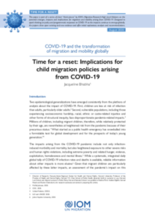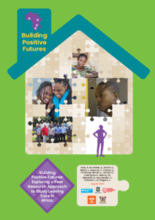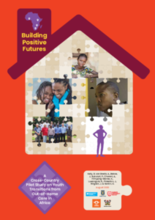Demographic Data:
|
Sources: World Bank, UNICEF, UNDP HDR 2015, DHS 2013/2014 |
Displaying 3651 - 3660 of 14348
This issue of the e-journal CYC-Online includes articles on the impact of COVID-19 on children in alternative care in South Asia, residential care centers during COVID-19, child welfare experience among child and youth care practitioners, and more.
This paper is part of a series of short “think pieces” by IOM’s Migration Research and Publishing High-Level Advisers on the potential changes, impacts and implications for migration and mobility arising from COVID-19. Designed to spark thinking on policy and programmatic responses to COVID-19 as its impacts continue to emerge globally, the papers draw upon existing and new evidence and offer initial exploratory analysis and recommendations.
This Inter-Sectoral Standard Operating Procedure for child protection and family welfare (ISSOP) provides a harmonized framework of agreed standards, principles and procedures for all child protection and family welfare stakeholders in Ghana to understand each other’s roles and responsibilities.
This report outlines the peer research approach adopted by the Building Positive Futures project and summarises the findings of the pilot of the peer research methodology on leaving care in Africa.
This report is a short summary of the main findings from 'Building Positive Futures: A Cross-Country Pilot Study on Youth Transitions from Out-of-Home Care in Africa,' written for youth who participated and other interested young people.
Given the paucity of research on youth transitioning from alternative care (i.e. care-leaving or leaving care) in Africa, the study sought to develop and test a methodology for a cross-country, comparative study on leaving care in Africa.
A group of young people with care experience came together on a webinar on June 6, 2020 and developed this set of commitments and recommendations specific to the issues affecting children and youth from alternative care settings globally.
"Child representatives and care leavers from South East Asia have called for increased support for continuing education, psychosocial care, finding jobs and affordable housing in the wake of COVID-19," according to this news article from SOS Children's Villages.
This paper draws upon lessons from SPOON Foundation's work in 17 countries since 2008, summarizing the main nutrition considerations for children in alternative care and offering recommendations on integrating nutrition and feeding practices into alternative care programs. This paper also explores ways that nutrition can support the global movement to ensure every child has family-based care, while meeting the immediate needs of the millions of children currently in all types of alternative care.
Researchers are increasingly using self-report measures of physical, psychological, and sexual violence and neglect for population-based surveys. The current gold-standard measure, the 45-item ISPCAN Child Abuse Screening Tool has been used across the world. This study assesses its adequacy for measuring abuse across countries.







